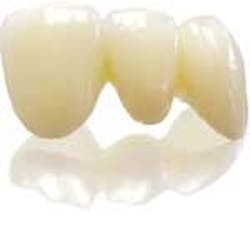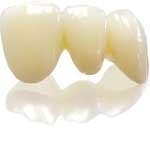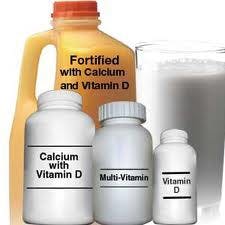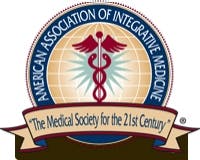Strategies to support midlife issues in women
By Maria Perno Goldie, RDH, MS
There are many metabolic issues through a women’s life cycle. In midlife and beyond, perimenopause, menopause, and postmenopause take center stage. A new report investigates many of the metabolic changes that occur in women beginning in the fourth and fifth decades of their lives.(1) The report reviews a range of metabolic issues including thyroid, adrenal dysregulation, insulin resistance, diabetes, obesity, and metabolism during perimenopause and menopause stages. The author offers several botanical solutions that address some of these issues and their related symptoms. Throughout the report, the author cites multiple research and case studies proving the effectiveness of botanical solutions for metabolic issues. The report is based on a webinar presented by Gaia Herbs Professional Solutions and hosted by Integrative Practitioner in October 2011.Suggestions for proper dosages for each adaptogen discussed are presented. An adaptogen is a herbal product claimed to increase resistance to stress, trauma, anxiety and fatigue. The term is used mainly by herbalists who also refer to adaptogens as rejuvenating herbs, qi tonics, rasayanas, or restoratives. There is no strict definition of the adaptogenic characteristics of a plant product, leading to a generalized usage of the term for commercial or non-scientific reasons.(2) Metabolic Issues in Midlife Women
There are about 11 million Americans today who have been diagnosed with thyroid problems. By the age of 60, about 17 percent of women and 9 percent of men have been diagnosed with hypothyroid. One of the biggest problems, however, is the large number of thyroid conditions that go undiagnosed. It is estimated that one-in-71 women over the age of 50 go undiagnosed, despite the fact that we have many basic screening tools, including physical exams and laboratory diagnosis, to identify people who suffer from thyroid problems.(1) According to the American Association of Clinical Endocrinologists, an estimated 25 million people have some form of hypothyroidism, but only half have been diagnosed.(3) Hypothyroidism is a condition in which the thyroid gland does not make enough thyroid hormone.(4) Among many other risk factors for hypothyroidism, age over 50 years and being female are two of them. The purpose of treatment is to replace the thyroid hormone that is lacking. Levothyroxine is the most commonly used medication in conventional treatment. Doctors will prescribe the lowest dose possible that effectively relieves symptoms and brings your TSH level to a normal range. If you have heart disease or you are older, your doctor may start with a very small dose. Lifelong therapy is required unless you have a condition called transient viral thyroiditis. You must continue taking your medication even when your symptoms go away. When starting your medication, your doctor may check your hormone levels every 2-3 months. After that, your thyroid hormone levels should be monitored at least every year.(4)
There are about 11 million Americans today who have been diagnosed with thyroid problems. By the age of 60, about 17 percent of women and 9 percent of men have been diagnosed with hypothyroid. One of the biggest problems, however, is the large number of thyroid conditions that go undiagnosed. It is estimated that one-in-71 women over the age of 50 go undiagnosed, despite the fact that we have many basic screening tools, including physical exams and laboratory diagnosis, to identify people who suffer from thyroid problems.(1) According to the American Association of Clinical Endocrinologists, an estimated 25 million people have some form of hypothyroidism, but only half have been diagnosed.(3) Hypothyroidism is a condition in which the thyroid gland does not make enough thyroid hormone.(4) Among many other risk factors for hypothyroidism, age over 50 years and being female are two of them. The purpose of treatment is to replace the thyroid hormone that is lacking. Levothyroxine is the most commonly used medication in conventional treatment. Doctors will prescribe the lowest dose possible that effectively relieves symptoms and brings your TSH level to a normal range. If you have heart disease or you are older, your doctor may start with a very small dose. Lifelong therapy is required unless you have a condition called transient viral thyroiditis. You must continue taking your medication even when your symptoms go away. When starting your medication, your doctor may check your hormone levels every 2-3 months. After that, your thyroid hormone levels should be monitored at least every year.(4)
In the world of integrative medicine, sometimes Ashwagandh is used for hypothyroidism The traditional description of Ashwagandha is as a tonic, improving the ability of the body and the organism to adapt to its surroundings. Amphoteric is one of the actions of Ashwagandha, which is a substance that normalizes functions of an organ or system within the body. It is not just adaptogenic, but it has a broad spectrum of activity including anti-inflammatory properties, blood-sugar regulating properties, general immune support, anti-oxidant, anti-anemic, anti-tumor, hypoglycemic agent, neuroendocrine tonic, regulates HPA axis, and as a general tonic.(1) There are many therapeutic uses, especially for depression, exhaustion, chronic fatigue, hypothyroidism, adrenal insufficiency, and even infertility.There is some thyroid impact of Ashwagandha, as well as a role in metabolic syndrome and in type 2 diabetes, because it supports blood sugar stabilization. Ashwagandha, and most of these adaptogens, can be thought of as an orchestra conductor, regulating the hypothalamic-pituitary-adrenal axis.(1) That’s important in perimenopausal women when that HPA axis is confused and erratic.(1) There have been some in vitro studies which how a decrease in oxidative stress load, reduction in lipid peroxidation, increase in SOD and catalase, regulation of serum T3 & T4 levels, and regulation of thyroid hormone conversion.(5) The Memorial Sloan-Kettering Cancer Center has Information About Herbs, Botanicals and Other Products, but states that it is for general health information only, and the website is not to be used as a substitute for medical advice, diagnosis or treatment of any health condition or problem.(6) The scientific name is Withania somnifera, and common names are Ashwagandha, Indian ginseng, and Winter cherry.
A popular Ayurvedic herb, ashwagandha is often used in formulations prescribed for stress, strain, fatigue, pain, skin diseases, diabetes, gastrointestinal disease, rheumatoid arthritis, and epilepsy.(7) It is also used as a general tonic, to increase energy and improve health and longevity.(8) The National Center for Complementary and Alternative Medicine (NCCAM) has identified a number of research areas, including Ashwagandha (Withaniasomnifera), of particular interest to them.(9) It is important to emphasize that NCCAM is interested in studying the mechanisms of action for natural products and NOT their clinical efficacy. According to the NCCAM, Ashwagandha is an herb used in Ayurvedic medicine.(9) Many compounds have been identified from this plant, but activity is most often associated with the withanolides and other steroid lactones. Reported bioactivities include effects on carbohydrate and lipid metabolism, anti-leishmanial activity, immune modulation, decreased anxiety, and prevention of neurodegenerative diseases and cancer. Such an extensive list of possible health benefits for this plant raises the possibility that a more systemic effect could be at work. An examination of the changes in gene, protein, or regulatory RNA expression or localization in response to this herb would help to identify possible explanations for such diverse activity. Examples of responsive projects include: Characterization of bioavailability and pharmacokinetics/pharmacodynamics of bioactive constituents; immunomodulatory mechanisms; elucidation of potential targets that might be relevant to prevention of neurodegenerative diseases or cancer, especially clarification of relevance of in vitro data to in vivo activities; and assessment of potential changes in gene or protein expression (including changes in posttranslational modifications and localization) in response to W. somnifera or its isolated components.(9)The report addresses adrenal dysregulation, perimenopause, menopause, insulin resistance, type 2 diabetes, obesity in women, and slowed metabolism. It also investigates botanical solutions in addition to Ashwagandha, such as adaptogens Rhodiola rosea, Schisandra chinensis, and others.(1) Memorial Sloan-Kettering Cancer Center has integrative medicine services that complement mainstream cancer care. The center offers touch therapy, mind-body therapy, acupuncture, creative therapy, and nutrition counseling, as well as exercise programs to improve strength and promote relaxation.(10) There are journals of integrative medicine.(11,12)
For more information on integrative medicine, visit a variety of websites.(13-17)References
1. Hudson T. Botanical Strategies to Support Metabolic Issues in Midlife Women. www.integrativepractitioner.com, p 1-14. 2. Wikipedia. en.wikipedia.org/wiki/Adaptogen. 3. www.synthroid.com/Hypothyroidism/Default.aspx. 4. U.S. National Library of Medicine - The World's Largest Medical Library. PubMed Health. www.ncbi.nlm.nih.gov/pubmedhealth/PMH0001393/.5. Panossian A and Wikman G, Effects of Adaptogens on the CNSand the Molecular Mechanisms Associated with Their Stress-Protective Activity, Pharmaceuticals 2010, 3,188-224; doi:10.3390/ph3010188.6. www.mskcc.org/cancer-care/integrative-medicine/disclaimer. 7. Prakash J, Gupta SK, Dinda AK. Withania somnifera root extract prevents DMBA-induced squamous cell carcinoma of skin in Swiss albino mice. Nutr Cancer. 2002;42(1):91-97.8. Dafni A, Yaniv Z. Solanaceae as medicinal plants in Israel. J Ethnopharmacol. Aug 1994;44(1):11-18.9. nccam.nih.gov/grants/CAMNP/priorities/.10. www.mskcc.org/cancer-care/integrative-medicine. 11. www.sciencedirect.com/science/journal/10962190.12. www.imjournal.com/. 13. www.integrativepractitioner.com.14. www.webmd.com/a-to-z-guides/features/alternative-medicine-integrative-medicine.15. www.drweil.com/drw/u/ART02054/Andrew-Weil-Integrative-Medicine.html.16. www.dukeintegrativemedicine.org/.17. www.aaimedicine.com/.
1. Hudson T. Botanical Strategies to Support Metabolic Issues in Midlife Women. www.integrativepractitioner.com, p 1-14. 2. Wikipedia. en.wikipedia.org/wiki/Adaptogen. 3. www.synthroid.com/Hypothyroidism/Default.aspx. 4. U.S. National Library of Medicine - The World's Largest Medical Library. PubMed Health. www.ncbi.nlm.nih.gov/pubmedhealth/PMH0001393/.5. Panossian A and Wikman G, Effects of Adaptogens on the CNSand the Molecular Mechanisms Associated with Their Stress-Protective Activity, Pharmaceuticals 2010, 3,188-224; doi:10.3390/ph3010188.6. www.mskcc.org/cancer-care/integrative-medicine/disclaimer. 7. Prakash J, Gupta SK, Dinda AK. Withania somnifera root extract prevents DMBA-induced squamous cell carcinoma of skin in Swiss albino mice. Nutr Cancer. 2002;42(1):91-97.8. Dafni A, Yaniv Z. Solanaceae as medicinal plants in Israel. J Ethnopharmacol. Aug 1994;44(1):11-18.9. nccam.nih.gov/grants/CAMNP/priorities/.10. www.mskcc.org/cancer-care/integrative-medicine. 11. www.sciencedirect.com/science/journal/10962190.12. www.imjournal.com/. 13. www.integrativepractitioner.com.14. www.webmd.com/a-to-z-guides/features/alternative-medicine-integrative-medicine.15. www.drweil.com/drw/u/ART02054/Andrew-Weil-Integrative-Medicine.html.16. www.dukeintegrativemedicine.org/.17. www.aaimedicine.com/.
Maria Perno Goldie, RDH, MS
To read previous articles in RDH eVillage FOCUS written by Maria Perno Goldie, go to articles.




